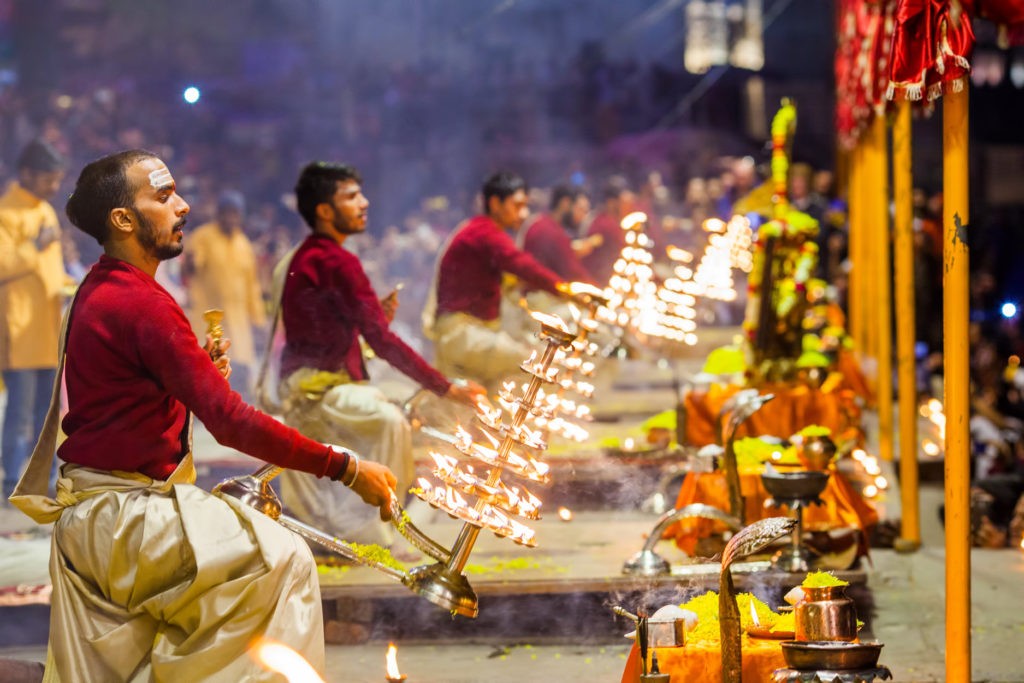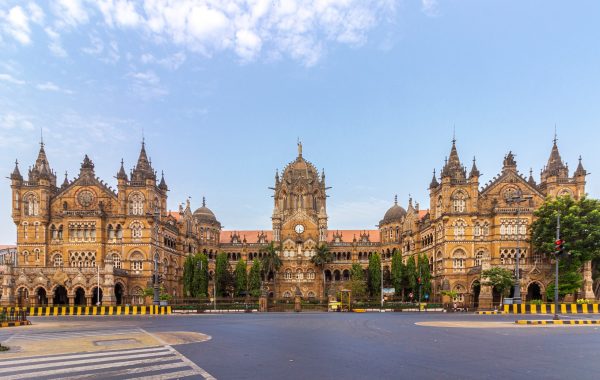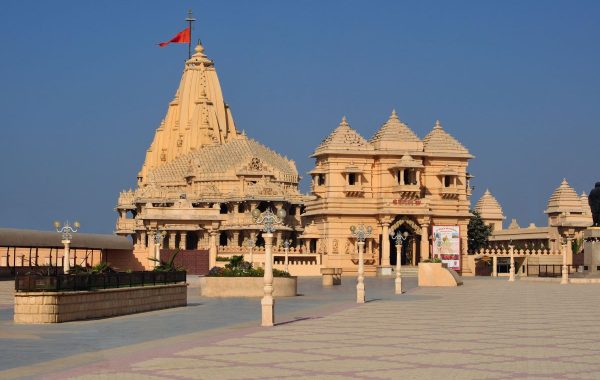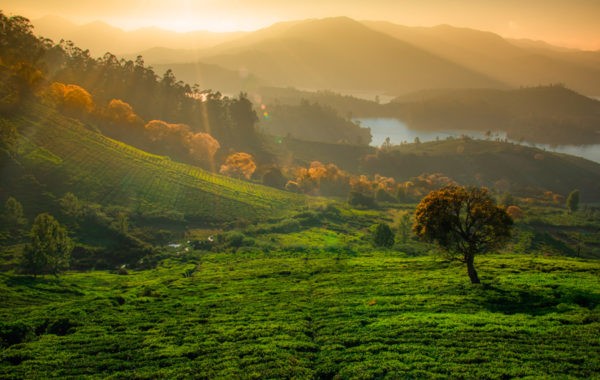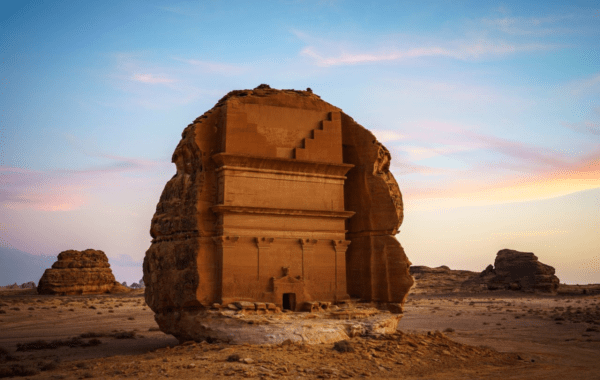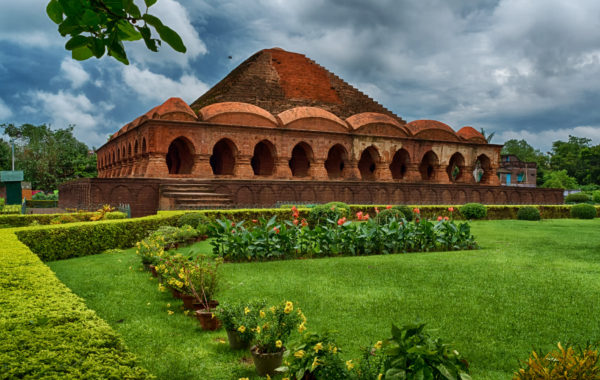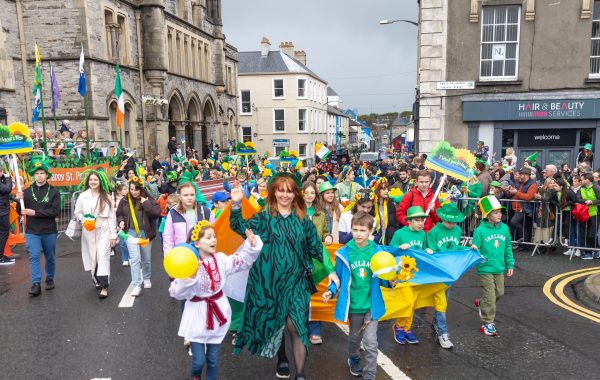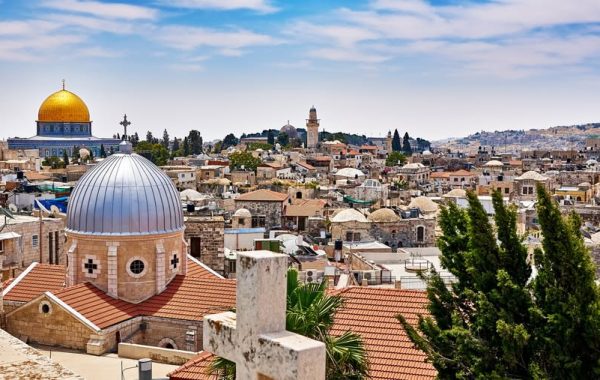Varanasi, also popularly known as Benaras, or Kashi, is an ancient city in Uttar Pradesh, widely known for its mesmerizing ghats, architecturally rich temples, and vibrant atmosphere. Regarded as the spiritual capital of India, Varanasi is located on the banks of the river Ganga and is considered one of India’s most holy locations. It is a beautiful place worth visiting, glistening with lights, diyas, and positive energy!
Pilgrims flock to these enchanting ghats to bathe in the holy water to cleanse themselves of their sins and purify their souls. The city is also regarded as one of the most auspicious sites to perform various rituals and pujas at these ghats since it is located at the confluence of three prominent holy rivers: the Ganga, Yamuna, and the Brahmaputra.
Autumn is the best season to visit Varanasi and take in everything that the city has to offer. The weather remains pleasant during this season and the festive vibe sheds a different light to this place! If you’re on the fence and indecisive about where you want to travel this season, here are ten convincing reasons for you to visit Varanasi.
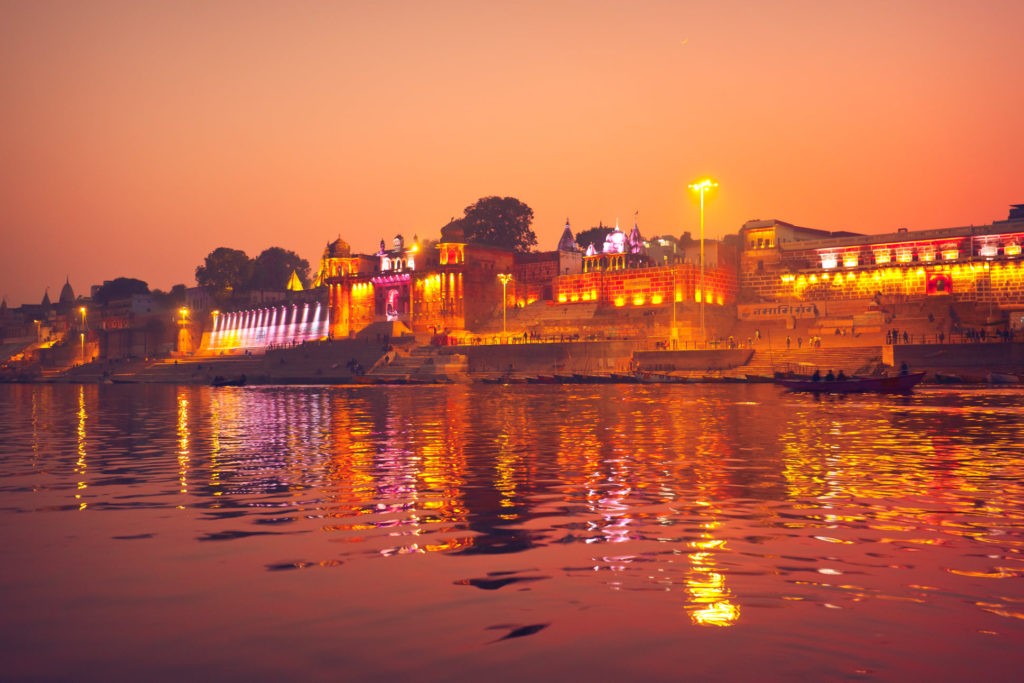
1. Maha Shivratri
Varanasi, known as the city of Lord Shiva, holds immense significance during Maha Shivaratri – the auspicious occasion commemorating the sacred union of Lord Shiva and Goddess Parvati, symbolizing the convergence of cosmic energies and the balance between masculine and feminine principles.
Celebrated on the 14th day of the dark fortnight of the Phalgun month (February/March) in the Hindu calendar, this festival is revered deeply in Varanasi. The Shiva temples across the city are adorned beautifully, marking the beginning of a grand procession from the Mahamrityunjaya Temple in Daranagar to the Vishwanath Temple. A vibrant fair accompanies the festivities. Devotees throng the Shiva temples, offering prayers that often extend into the late hours of the night. Traditionally, offerings of flowers, coconut, bhang, dhatura, fruits, and more are made to the shivlings and idols as a token of reverence.
2. Dev Deepawali
Varanasi lights up in celebration not just once but twice every year. It is an experience that is at once spectacular, overwhelming and unforgettable. On the full moon 15 nights after Diwali, the holy city celebrates Dev Deepavali—literally, the Diwali of the Gods—when the gods and goddesses are believed to visit the Earth for a dip in the river. Another myth attributes the festival to the defeat of the demon Tripurasura by the city’s patron deity, Shiva.
3. The Diverse Culture of Varanasi
Varanasi is a renowned hub of Indian culture because of its blend of archaeology, mythology, geography, art, and history. Varanasi is mostly associated with Hinduism and Buddhism, although it also has a diverse range of religious beliefs, styles of worship, and religious bodies. Believed to be the abode of Lord Shiva, Varanasi stands among the seven revered cities in the nation. According to legend, Lord Shiva brought the celestial Ganga to Earth, endowing the river with a sacred status. Devotees from across the country flock to Varanasi to immerse themselves in the holy waters of the Ganges, believing that such a ritual cleanses them of sins. The city is also associated with the attainment of moksha (salvation) for those cremated on its sacred grounds. The Kashi Yatra, a pilgrimage to the city formerly known as Kashi, is considered a crucial rite in the lives of many, embodying spiritual significance. In recent times, Varanasi has evolved into a hub for philosophy, yoga, the ancient healing art of Ayurveda, and astrology.
4. An Illustrious History
According to historians, Aryans founded the civilisation in Varanasi during the Ganges Valley civilization. It was a commercial and industrial centre known for its muslin and silk textiles, fragrances, ivory works, and sculpture. In the 6th century BC, Lord Buddha gave his first sermon in Sarnath, about 12 kilometres away from Varanasi, initiating the new faith of Buddhism. Jain literature regards Kashi as a holy city, attributing this status to its role as the birthplace of four Jain tirthankaras,(saints). During the time of the Buddha, Varanasi was the capital of the kingdom of Kashi. Furthermore, the beautiful ghats of Varanasi were erected during the rule of the Maratha Empire. There are more than eighty ghats around the city, each with a fascinating story behind it. These tales are worth exploring since they provide insight into Varanasi’s rich history!
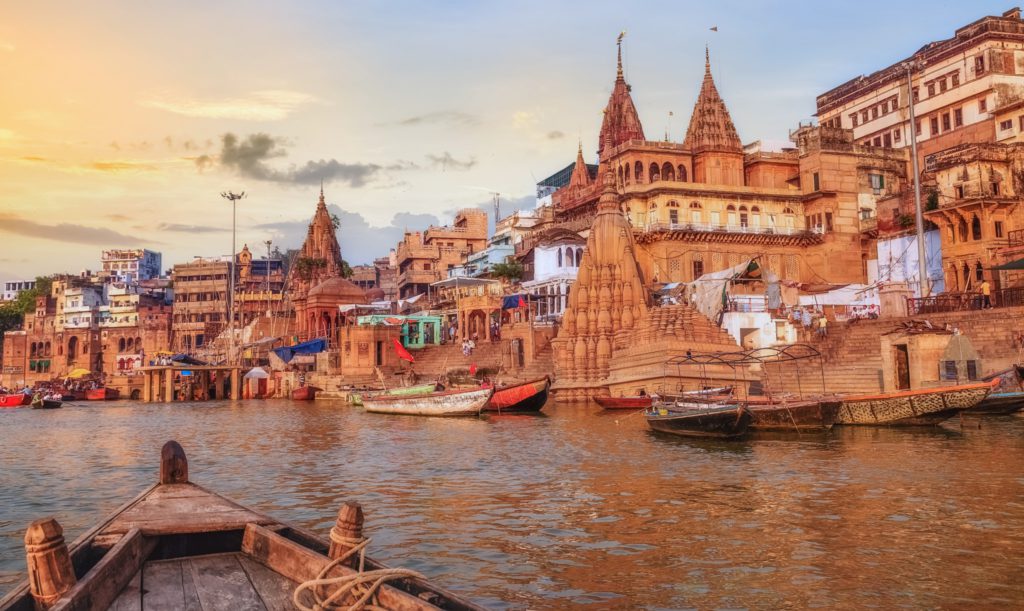
5. The Beautiful Ghats and the Magnificent Temples
When in Varanasi, you could explore the beauty of the numerous ghats that this place has to offer. Assi Ghat, Digpatia Ghat, Darbhanga Ghat, Dashashwamedh Ghat, Scindia Ghat, Chet Singh Ghat, and Man Mandir Ghat are just a few of the prominent ghats you may visit here. Varanasi’s sacredness is reflected not just in these ghats, but also in the numerous temples that are scattered over the city. In fact, Varanasi is adorned with more than 23000 temples! Thousands of pilgrims and visitors visit these temples throughout the year.
One of the most popular attractions in Varanasi, the Vishwanath Mandir, also known as Kashi Vishwanath Temple, is dedicated to Lord Shiva and attracts people from all over the world. You could also take a tour of the Durga Temple, Kaal Bhairav Mandir, Sankat Mochan Hanuman Temple, Nepali Hindu Temple, Kardameshwara Mahadeva Temple, Maa Annapurna Temple, Tridev Temple, and Tulsi Manas Temple. The city of Varanasi is also embellished with forts that date back to the Kashi Kingdom. The Ramnagar Fort, Chunar Fort, and Chet Singh Fort are some of the popular forts to visit.
6. The Delicious Food
Varanasi’s food is an important element of its culture. The food here is heavily influenced by neighboring regions such as Bihar and West Bengal. Your journey to Varanasi would be incomplete without you diving into the delectable cuisine that this place has to offer! The majority of Varanasi’s popular eateries are located on the ghats or in the narrow lanes that run behind them. The food here is mostly made with desi ghee. The kachori sabzi, Chena dahi vada, litti chokha, dahi chutney golgappe, chooda matar, tamatar chaat, and the Banarasi Thandai and lassi is to die for! Kashi Chaat Bhandar in Godowlia is a hot favourite for mouthwatering chaats. If you have a sweet tooth, New Rajshree Sweets near Kachahari Chauraha is the place to be. Oh, and don’t forget about the world-famous Banarasi Paan. Rajendra Chaurasia Paan is the best place for it.
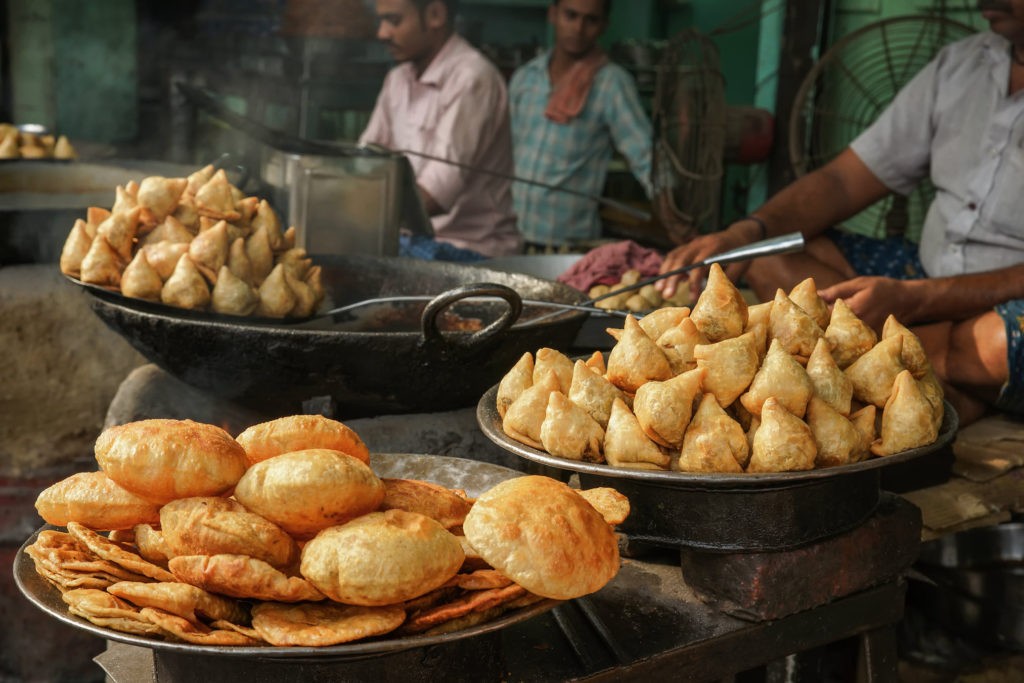
7. The Lively Cafes
Varanasi provides ample cultural enrichment for the café enthusiasts who love music to accompany their food! Most cafés in Varanasi provide a fulfilling and memorable experience with free intimate live music evenings. When in Varanasi, you could visit the Ganga Fuji Restaurant where you would find the framed paintings of Benaras with remarks from travellers. This place is well known among Western tourists due to its lively ambience and delectable cuisine that includes Spanish and Japanese dishes. The Monalisa (with a hearty and homely menu and best known for their apple piesm Korean kimchi fried rice, and wood-fire pizzas), Brown Bread Bakery, and the Sparrow Café are some of the other cafes worth visiting in Varanasi. Brown Bread bakery’s fabulous menu includes more than 40 varieties of European-quality cheese and more than 30 types of bread, cookies and cakes – along with excellent pastas, sandwiches and breakfasts. For vegans there’s Vegan and Raw – a courtyard restaurant near Tulsi Ghat is an offshoot of Brown Bread Bakery, featuring excellent vegan dishes, including a full page of salads from spinach-radish-walnut to papaya-pomegranate-linseed. Love pancakes? Head to Aum cafe for fabulous lemon pancakes, astounding lemon or organic green-tea lassis and lots of healthy vegetarian options. For more international gastronomic experiences, take a stroll down Assi Ghat, a lane packed with shops and restaurants. Choose from crisp pizzas, apple pies, and ice cream in a garden overlooking the ghat at Pizzeria Vaatika Cafe or stop at Hayat Mediterranean, for an authentic selection of Middle Eastern delicacies, drinks, and flavoured shishas in relaxed lounge-style seating.
For the ultimate fine dining experience, there’s the multi-cuisine Canton Royale famous for its Indian thalis and Continental fare or The Palate in Ramada Plaza and finally Clarks Hotel that offers a range of Indian, Continental, and Chinese delicacies. If you are looking for a pub crawl, then check out Trishna pub and the 3rd Floor Bar Stock Exchange in Sigra, or Mangi Ferra Café in Nadesar or Prinsep Bar in Taj Ganges specially if you want a taste of luxury in your drink.
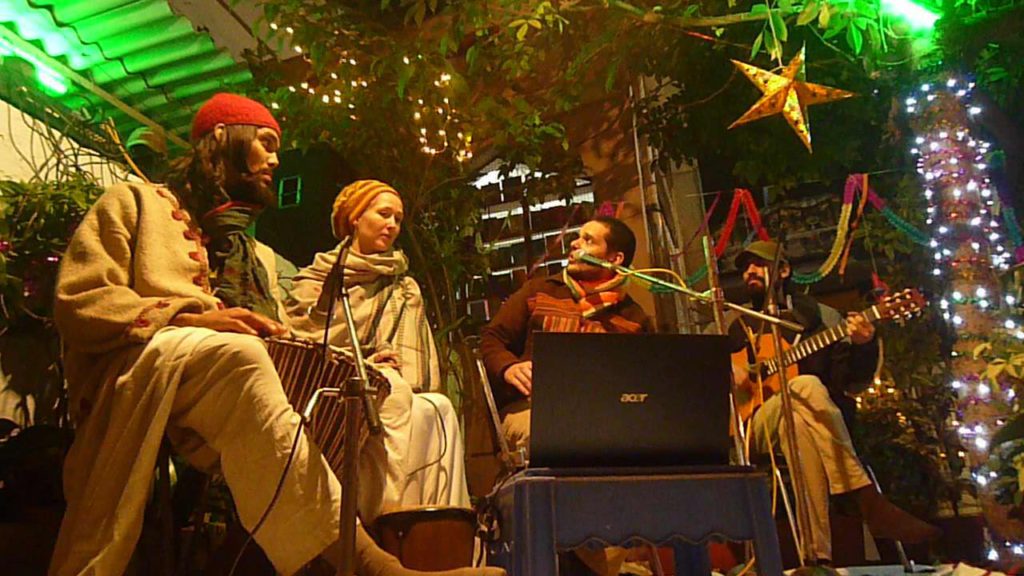
8. The Sound of Traditional Music
Varanasi is also home to a rich musical tradition that can be traced back to the Puranic canon, which attributes the development of music and dance forms to lord Shiva. In Varanasi’s history, we may discover various occurrences and examples of dance, music, and theatre. Varanasi’s musical growth was aided by the Bhakti movement throughout the mediaeval period. In Varanasi, great saints such as Chaitanya and Vallabhacharya were instrumental in the growth and popularity of music. Surdas, Kabeer, Raidas, Meera, and Tulsi, are some of the eminent figures of Varanasi who have made significant contributions to devotional music through their Bhajans.
9. The Mesmerizing Boat Rides
The morning rowing boat trip is one of Varanasi’s must-dos, as it provides the greatest view of the city. The boat rides in Varanasi blesses you with a glimpse into the local life of Varanasi and provide you with an unforgettable experience. With a sunrise boat trip in the Ganges River, you could immerse yourself in Hindu culture and customs by witnessing the vibrant ceremonies on the ghats at daybreak. The boat rides of Varanasi could be one of the most important highlights of your visit to this city! The boat rides are also a very convenient and viable option for small groups and families trying to take in a bird’s eye view of the beautiful ghats.
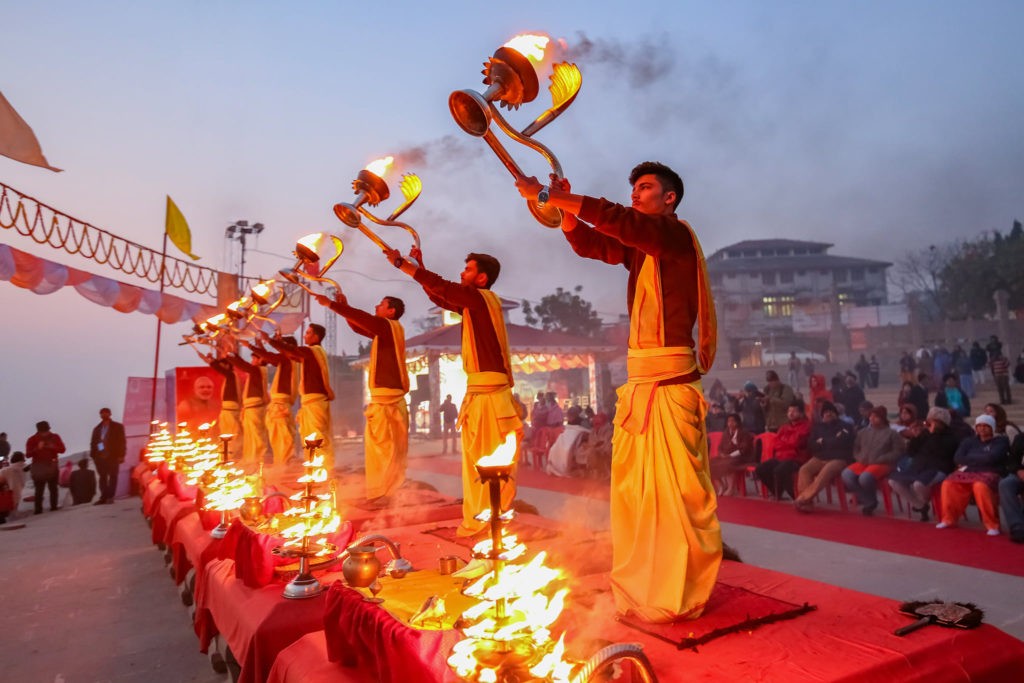
10. The Auspicious Evening Aarti
The evening aarti lasts around 45 minutes and takes place every day after sunset at 6:30 p.m. in the summer and 7:00 p.m. in the winter. The aarti takes place in the Dashashwamedh ghat, one of the holiest ghats in Varanasi. Varanasi’s Ganga aarti is a visual feast that allows us to perceive the divine inside and around us. There has never been a day when the sacred Ganga River has not been revered. People from all walks of life go to the city to see the Ganga aarti and is one of the must-visits on every traveller’s list. The visitors can witness the beauty of the aarti from the steps of the ghats, the boats, or the canopy of the Ganga Sewa Nidhi office. However, it is preferable to be at the venue at least an hour ahead of time for convenience and to ensure a good spot.
11. The Incredible Banarasi Sari!
Varanasi is well-known for its long and illustrious history of art, craft, music, literature, dance, and textile traditions. Silk weaving, especially the ‘Banarasi Sarees’, are a stunning piece of clothing made by the local artisans with finely woven silk. A Banarasi Saree can take anything from fifteen days to a month, and occasionally up to six months to produce, depending on the complexity of its motifs and patterns. These embellished sarees are composed of zari, silk, exquisite embroidery, complex designs, and engravings. Apart from the beautifully woven Banarasi Sarees, Varanasi is known for its brassware, copperware, ivory work, glass bangles, wood, stone, and clay toys, and superb gold jewellery. The Bhadohi Carpets and musical instruments are among the other souvenirs to bring back from Varanasi.
Photos : Shutterstock
For latest travel news and updates, food and drink journeys, restaurant features, and more, like us on Facebook or follow us on Instagram. Read more on Travel and Food Network
Trending on TFN
Quintessential Srinagar And the Kashmir Valley Travel and Food Guide


